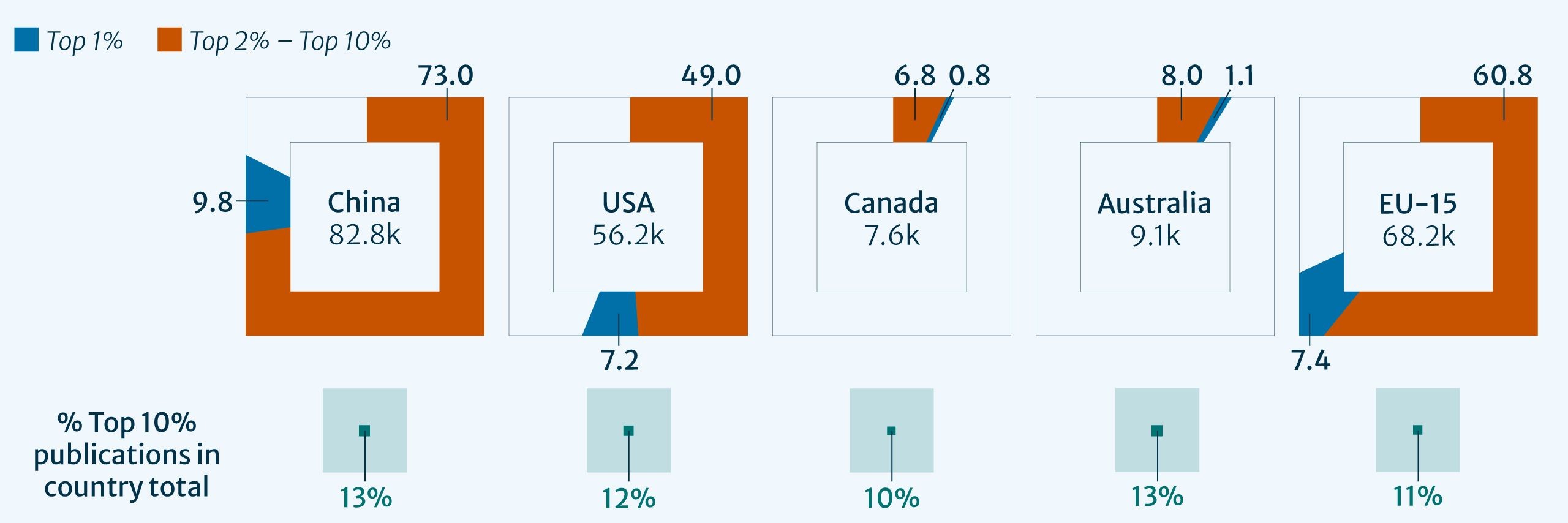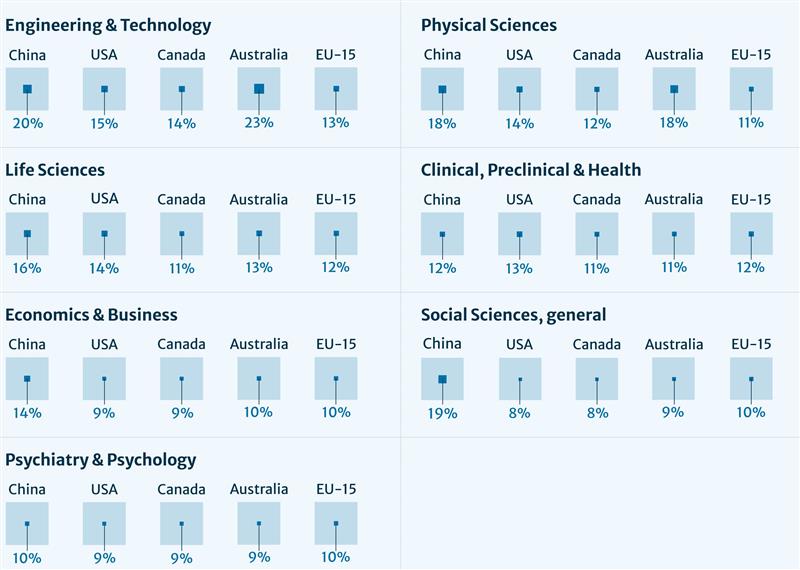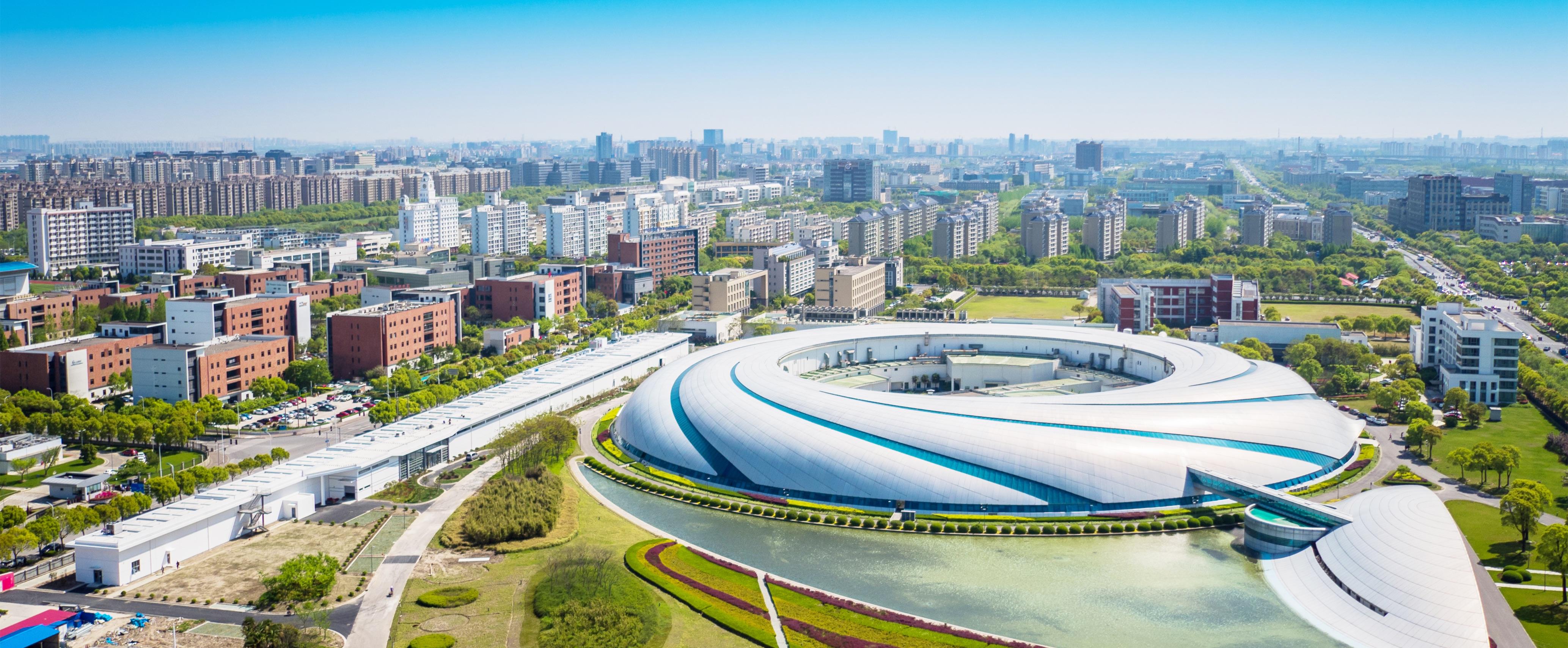When DeepSeek, a Hangzhou-based AI startup, released its DeepSeek-R1 model in early 2025, the tech world took notice. The large language model not only surpassed competitors like GPT-4 in multilingual reasoning benchmarks but did so with 75% lower energy costs—a breakthrough The Economist called "a masterclass in efficient AI development." Across the country, Hangzhou’s Unitree Robotics made waves with its Unitree Go2, a $16,000 robotic dog that sold out globally within four hours of launch.

The story behind these successes reveals more than corporate ingenuity. As Unitree CEO Xingxing Wang told media, "Our robots use homegrown servo motors and chips. Five years ago, that would have been unthinkable." From semiconductor self-sufficiency to AI ethics frameworks, China’s state-driven innovation model is rewriting the rules of technological competition. The nation's strategic innovation playbook has given birth to companies like DeepSeek and Unitree Robotics, symbolizing a seismic shift: the world’s factory is now its laboratory.
China’s rise as an innovation powerhouse is etched in hard data. The World Intellectual Property Organization (WIPO) reported 1.58 million patent filings from China in 2023—nearly half the global total. In high-stakes fields like quantum computing, Chinese researchers contributed to 27% of 2023’s most cited papers, outpacing the U.S. for the third consecutive year (Nature Index).


The most recent Nature Index data shows that China is the leading country globally for research output in the database in chemistry, Earth & environmental sciences and physical sciences, and is 2nd for biological sciences and health sciences. Source: Nature Index
This momentum stems from deliberate human capital strategies. With 2.41 million STEM graduates in 2023—enough to staff 50 Silicon Valleys—China’s talent pipeline dwarfs Western counterparts. Universities have become innovation hubs: Tsinghua University alone filed 3,450 patents last year, partnering with firms like DeepSeek on AI safety research.
Crucially, private-sector dynamism aligns with state priorities. Of China’s 356 tech unicorns, 72% operate in sectors targeted by the "Made in China 2025" plan, from advanced robotics to biomedicine. As DeepSeek’s CTO Li Zhe explained, "Our work on energy-efficient AI directly supports national carbon neutrality goals. The alignment is explicit."
For years, China's innovation was often characterized as imitative – a process of "introduction + improvement + adaptation." But a new model is emerging, one that leverages China's unique strengths to forge a distinct path in the global landscape. This isn't just about catching up; it's about creating something new.
While past successes were built on absorbing existing technologies, experts now argue that China's future hinges on a more original approach. Over-reliance on mimicry risks getting stuck in low-value industries. China needs to define its own innovation narrative, one rooted in its unique system and distinct from Western models.
At the heart of this shift is what's being called the "New State-Driven System." This approach, championed by the CCP, harnesses the power of centralized planning and resource allocation, a hallmark of its socialist framework. By strategically directing national scientific and technological resources, the government aims to achieve breakthroughs in critical areas. Think of it as turbocharging innovation, giving scientists and engineers the tools they need to excel. Landmark achievements like the manned spaceflight, nuclear fusion power plant and high-speed rail are testaments to this system's potential.
Additionally, in an era of heightened global competition, securing technological independence is paramount. China recognizes the need to overcome "bottleneck" issues in key technologies and is doubling down on basic scientific research. The goal: to ensure high-quality development and safeguard national security through independent innovation. This is evident in China's successes with 5G technology, the BeiDou Navigation System, and the C919 aircraft.
But a powerful system needs a fertile ground to flourish. That's where China's burgeoning innovation market comes in. This market, driven by a mix of government initiatives, economic forces, and societal needs, acts as a resource allocation mechanism, connecting supply and demand for new ideas.

For example, on the policy side, the 14th Five-Year Plan (2021-2025) earmarked 1.4 trillion for strategic technologies, with semiconductor subsidies alone hitting 1.4 trillion in 2023. Tax incentives also turbocharge R&D. Initiatives like the "Little Giants" program have nurtured 12,400 firms in niche technologies since 2018, including 23 AI startups now valued over $1 billion.
Amidst this innovation boom, cities like Shenzhen and Hangzhou are leading the way, creating advanced ecosystems with data exchanges, high-tech fairs, and specialized trading centers for technology and intellectual property.
Provincial governments vie to create Silicon Valley analogs. Shenzhen’s "20+8" industrial policy birthed 217 AI startups in 2023, while Hangzhou’s robotics hub offers $50,000 per engineer hired. Shanghai’s Zhangjiang Science City illustrates cluster effects: 82% of its 950 tech firms collaborate with onsite research institutes.

Zhangjiang Science City in Shanghai
"The supply chain here moves at WeChat message speed," noted Unitree’s Wang. "We redesigned Go2’s actuators in 11 days using local suppliers—a process that would take months abroad."
However, the true power of Chinese-style innovation lies in its inclusivity. The "Mass Entrepreneurship and Innovation" movement seeks to unlock the creative potential of the entire nation. By fostering a culture of innovation and dismantling institutional barriers, China aims to tap into the ingenuity of its vast population. The numbers speak for themselves: millions of new private enterprises in tech sector and a scientific and technological workforce that ranks first in the world.
Despite its emphasis on independence, China understands the importance of global collaboration. Since its period of reform and opening up, it has actively sought external exchanges, showcasing its achievements while learning from others. This "bringing in" and "going out" approach allows China to integrate into the global innovation network, fostering mutual benefit and creating an "Innovation Community." Initiatives like the "Belt and Road" further promote technological cooperation, establishing joint labs and facilitating cross-border technology transfer.
The strength of the Chinese model lies in its ability to combine top-down strategic direction with bottom-up innovation. The government plays a crucial role in setting priorities and allocating resources, while fostering a vibrant market that encourages competition and rewards ingenuity.
China’s innovation model—state-guided yet market-responsive—offers developing nations an alternative to Western paradigms. President Xi Jinping’s "Chinese-style modernization" concept prioritizes three synergies:
By coupling vocational training (70 million workers by 2025) with sector-specific subsidies, China shows how mid-income economies can climb value chains. Vietnam’s 2024 AI strategy directly emulates this approach, allocating $500 million for semiconductor workforce development.
While leading in global patent filings, China maintains strict data laws—a balance countries like Brazil now replicate. As BRICS AI Coalition chair Ana Paula Rego noted, "China proves you can collaborate on quantum satellites while safeguarding digital borders."
China’s $546 billion investment in renewable R&D (2021-2025) has slashed solar panel costs by 89% since 2010. Nations from Egypt to Argentina now partner with Chinese firms like LONGi Green Energy to build localized clean tech ecosystems.
Critics cite risks of overcapacity and IP disputes. Yet as Kenya’s ICT Cabinet Secretary Eliud Owalo argued at the 2024 FOCAC Summit: "China’s model delivers infrastructure and skills transfer faster than IMF orthodoxy. For us, that’s transformative."
While China has made remarkable strides in applied technologies—leveraging robust engineering capabilities in fields like AI, high-speed rail, and telecommunications—its foundational scientific research lags behind global leaders. The absence of paradigm-shifting breakthroughs in basic theories and persistent flaws in innovation management systems highlight critical gaps in the nation’s scientific ecosystem.
China’s scientific achievements often prioritize immediate industrial applications, driven by rigid project timelines and quantifiable outcomes. This approach stifles high-risk, long-term basic research, which requires decades of sustained investment and tolerance for uncertainty.
Moreover, the history of human innovation reveals a paradoxical truth: many of the most transformative inventions emerged not from meticulous planning but through accidental discoveries, failed experiments, and unpredictable societal shifts. From penicillin’s mold-contaminated Petri dish to the microwave oven’s melted candy bar, breakthroughs often defy deliberate roadmaps. In fact, approximately 50% of major scientific discoveries since 1900 involved serendipity, according to a 2022 analysis by the Royal Society of UK.
It is increasingly evident that China has to design a new framework to foster an environment that encourages groundbreaking basic research and disruptive innovation. Incentivizing innovation requires a hybrid approach combining direct funding with indirect incentives. The WIPO model demonstrates a 40% increase in researcher engagement through this combination. Effective financial instruments include Innovation Vouchers for unrestricted exploration, Royalty-Sharing models like Stanford's 70/30 split, and Failure Compensation Funds allocating 15-20% for "safe failure." Non-monetary incentives are equally crucial, with MIT's Media Lab reporting a 35% higher patent output by using Modular Promotion Criteria and Cross-Disciplinary Sabbaticals, which increased unexpected collaboration by 62% in UC Berkeley trials.
Rethinking evaluation and embracing failure are vital for fostering disruptive innovation. The Intellectual Ventures ecosystem uses the Three Horizons Framework to assess projects across different timeframes, aligning with DARPA's "20-year rule." South Korea's KAIST Institute reduced researcher anxiety by 58% through Negative Result Journals, Portfolio Evaluation, and Anti-Success Symposia. Adaptive regulatory frameworks, like the Phased Intervention Model observed in FDA and FCC policies, allow for graduated compliance, as seen with Kymeta's satellite antennas navigating 47 jurisdictions. Singapore's Centre for Strategic Futures builds regulatory foresight through Technology Scouting Cells, Regulatory War Games, and Policy Prototyping Labs.
Fostering innovation ecosystems through the Quadruple Helix Engagement Model, as seen in Taiwan's semiconductor cluster which increased patent citations by 73%, is essential. This involves Innovation Marketplaces, Co-Location Mandates, and IP Pooling Strategies. Challenge-Based Funding, exemplified by ARPA-E's model with 89% higher commercialization rates, allocates 70% to solution development, 20% to cross-industry teams, and 10% to "wild card" proposals. Sustaining momentum requires cultivating innovation literacy through Pre-Commercialization Internships, Failure Deconstruction Modules, and Policy Immersion Programs, as demonstrated by Finland's national curriculum which increased STEM participation by 22%.
China's innovation ecosystem faces a significant challenge in discerning genuinely groundbreaking projects from superficial or fraudulent endeavors. This struggle is exacerbated by weak oversight mechanisms and funding decisions influenced by political motives, often favoring quantity over quality.
Case Study 1: The "Hanxin" Chip Scandal (2003–2006)
In this case, Professor Chen Jin from Shanghai Jiao Tong University falsely claimed to have developed China's first domestically designed digital signal processing (DSP) chip, known as "Hanxin." The scandal unfolded when it was revealed that Chen's team had relabeled imported chips and fabricated test results to secure over ¥1 billion in government grants. The repercussions of this scandal were significant, resulting in a setback of China's semiconductor autonomy by a decade, erosion of public trust, and the exposure of systemic flaws in project vetting. Authorities' over-reliance on superficial metrics like patent counts, rather than technical validation by independent experts, contributed to the perpetuation of such fraudulent activities.
Case Study 2: New Energy Vehicle (NEV) Subsidy Exploitation
During the mid-2010s, companies exploited loopholes in New Energy Vehicle (NEV) subsidy policies by engaging in the production of low-quality electric vehicles (EVs) or even creating "paper cars" (ghost projects) to fraudulently claim funds. This misuse of subsidies led to a misappropriation of approximately ¥9.4 billion between 2016 and 2020, with some firms resorting to tactics like inflating sales data or recycling batteries to meet quota requirements. The root cause of such exploitation was the lack of technical expertise among evaluators, which allowed manipulators to take advantage of the system.
Moreover, outdated peer review practices in China contribute to the perpetuation of these issues. The peer review system, which heavily relies on domestic academic networks, often discourages critical scrutiny and nurtures complacency among researchers.
A study in 2022 analyzing 12,000 state-funded AI research papers revealed that 87% of them self-identified as "internationally leading," yet fewer than 5% were cited by global industry leaders like Google or OpenAI. Many of these papers focused on incremental improvements rather than true foundational breakthroughs. For instance, in 2021, researchers at Tsinghua University published a paper claiming a "revolutionary breakthrough" in quantum computing efficiency, but independent verification found the methodology flawed and the results irreproducible due to reviewers' lack of quantum expertise and reluctance to critique senior academics.
Grant allocation in China often favors researchers based on institutional affiliations rather than merit. Investigations have shown that a significant portion (65%) of National Natural Science Foundation (NSFC) grants went to researchers affiliated with "elite" universities, while smaller institutions with innovative proposals were overlooked. This bias results in the dominance of conservative, low-risk projects in funding portfolios, stifling unconventional and potentially groundbreaking ideas.
To enhance governance and address existing flaws, China should integrate globally recognized models while adapting them to its unique environment. Implementing a hybrid third-party audit system, drawing inspiration from Germany's Fraunhofer Society and South Korea's Institute for Basic Science, would combine industry-academia joint evaluations with international peer review panels. For critical projects like semiconductor R&D, mandatory audits by neutral international firms or academics, similar to Taiwan's TSMC's use of IBM and Intel engineers for external validation, would ensure transparency and rigor.
Strengthening accountability through legal reforms and funding mechanisms is also crucial. Enacting laws akin to the U.S. False Claims Act, with significant penalties for subsidy fraud, would deter misconduct. Adopting a milestone-based funding approach, mirroring the EU’s Horizon Europe model, where grant disbursements are tied to the achievement of specific technical targets, could be piloted in initiatives like "Megaproject 02." Furthermore, decentralizing peer review by implementing double-blind trials for NSFC grants and mandating a significant proportion of international reviewers for state-funded journals, following the examples of Japan and Nature, would reduce bias and enhance the quality of research evaluation.
China’s innovation governance flaws stem not from a lack of resources but from institutional inertia and insularity. By integrating global expertise, enforcing accountability, and prioritizing quality over political expediency, the nation can transform its evaluation systems into engines of genuine scientific progress. The path forward lies in humility, collaboration, and unwavering commitment to meritocracy.